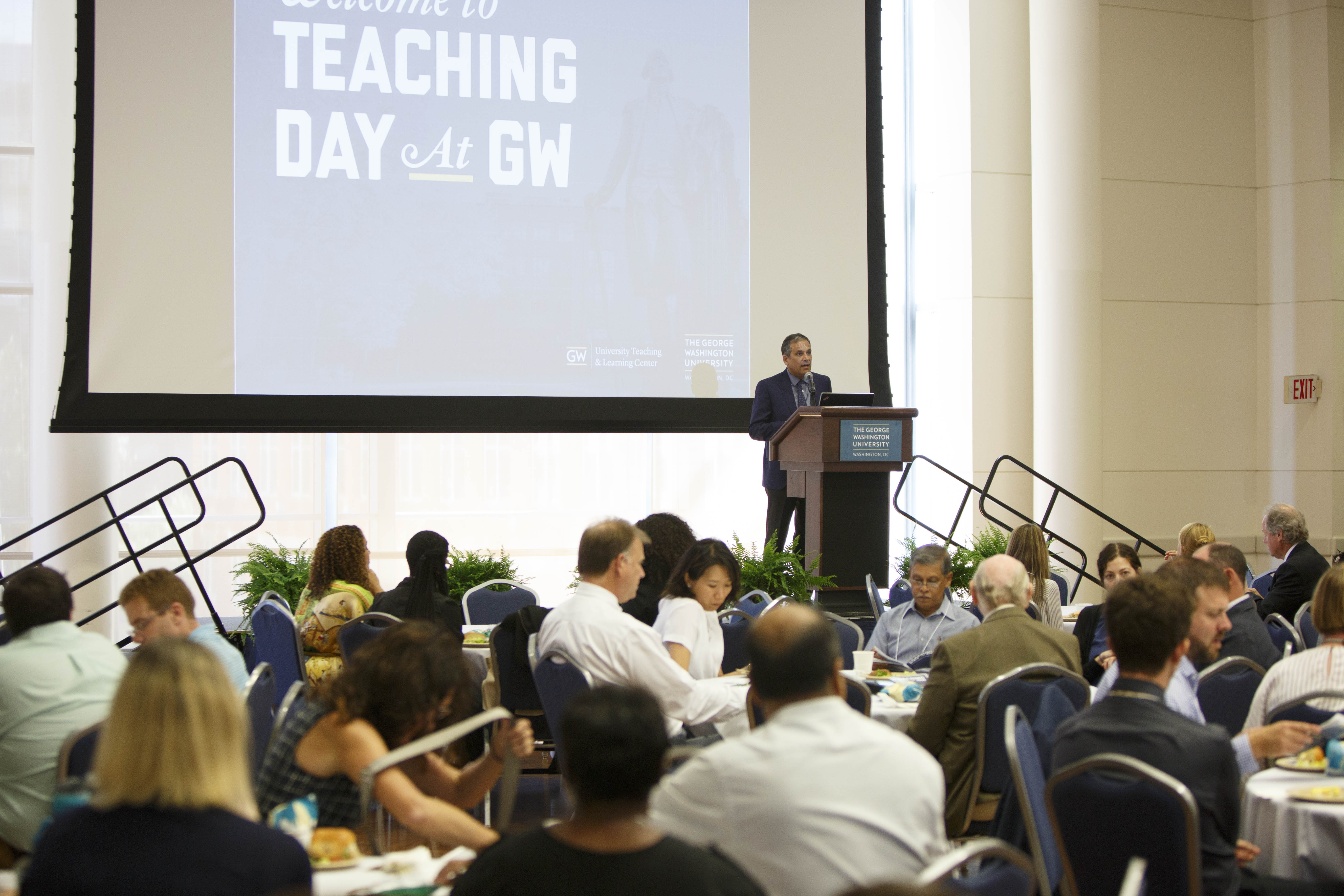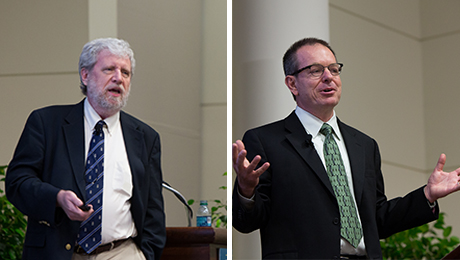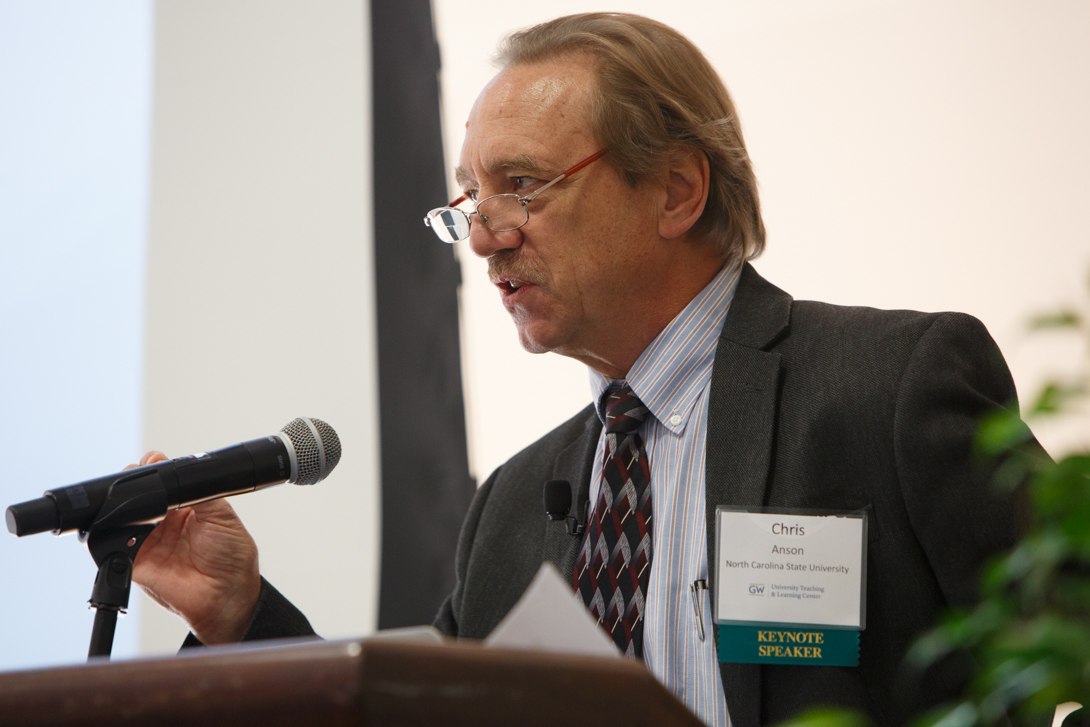Close to 200 faculty members attended the George Washington University’s seventh annual Teaching Day, a daylong event focused on course design and teaching support.
The University Teaching and Learning Center (UTLC) sponsored the day, which included faculty-led sessions, a keynote on incorporating active learning into lectures and a poster session where faculty presented research.
UTLC Director Patricia Dinneen said one of the great benefits of the day is the way it facilitates peer-to-peer learning on how to teach.
“There are many pockets of teaching expertise in particular approaches here at GW, whether in case method or online teaching or any number of other pedagogical areas,” Dr. Dinneen said. “Teaching Day is a great opportunity to combine that in-house expertise with some outside perspectives and share best practices.”
Todd Zakrajsek, a professor at the University of North Carolina School of Medicine, delivered a lunchtime keynote on active learning versus lecture.
The traditional lecture, Dr. Zakrajsek said, has fallen out of favor as alternative teaching formats grow more popular. But he said that to blame lecturing in itself, or to eliminate it from the curriculum as some institutions have announced they will, is missing the point.
“I don’t think the conversation is about lecturing or not lecturing—I think the conversation is going to be about engagement,” he said.
To demonstrate, Dr. Zakrajsek frequently paused his own keynote to ask the audience questions or invite dialogue. Students can make learning gains, he said, when they have the cognitive bandwidth to engage with the material and have not been overwhelmed by a flood of information in a single format.
“We shouldn’t stop lecturing because students get bored,” Dr. Zakrajsek said. “We should stop lecturing when we’ve maxed out their cognitive load, and then give them a chance to do something with that. That means the [non-lecture] activity is no longer just fluff we put in because students get bored—it’s the cement that holds [the lesson] together.”
At an afternoon poster session co-sponsored by the GW Academy of Distinguished Teachers, more than 30 faculty members shared research on pedagogy. Subjects included student assessment, curriculum design, and community-engaged scholarship. And a day-end session led by Dr. Zakrajsek on the science of learning drew 75 GW students to learn study strategies and insight into information retention.
The UTLC provides teaching support for faculty with special emphasis on course design, course delivery and experimentation with teaching. It is part of the division of Libraries and Academic Innovation, which integrates teaching, learning and research across the university.




